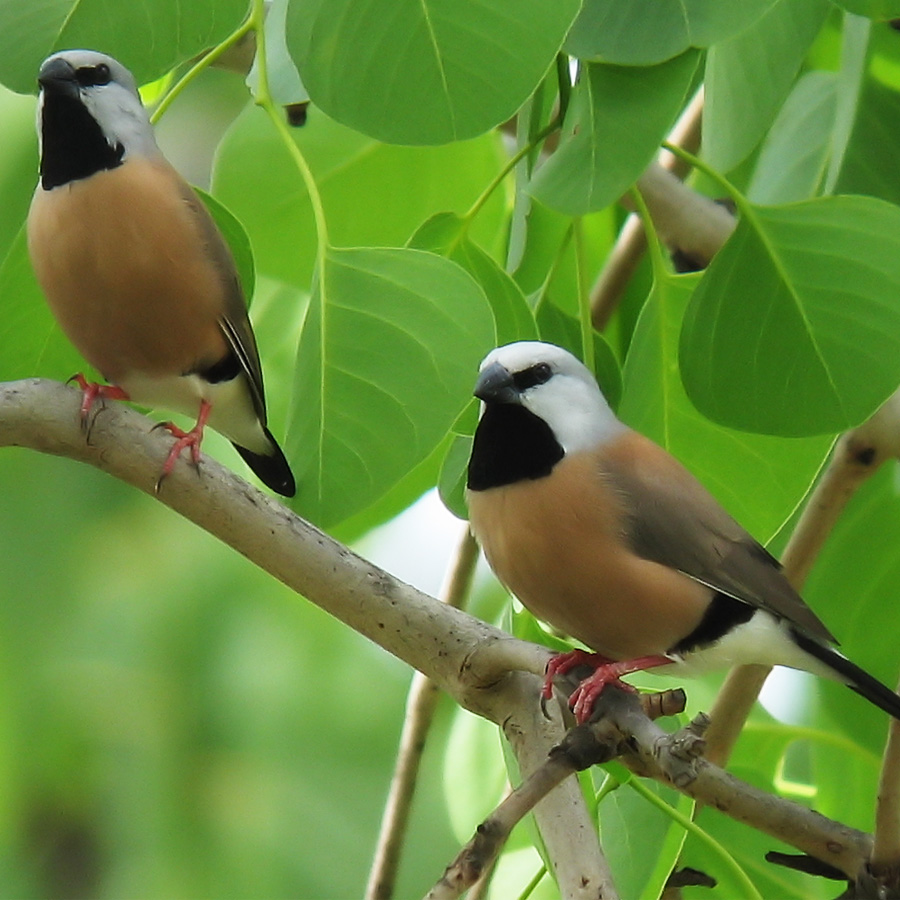Black-Throated Finch (white-rumped subspecies)
Poephila cincta cincta
Conservation Status
Queensland State: Endangered
Australian Government: Endangered
Species and status overview
The decline of the delicate Black-throated finch in Australia has been rapid, estimated to be more than 50% of the species in the last 10 years.
Black-throated finch previously occurred from northern New South Wales to Ingham, however there have been few records of the subspecies south of 23°S since the 1970s. There have been no recorded sightings from Brisbane since the 1930s, and the species was listed extinct around Rockhampton during the 1970s.
Black-throated finch have been recorded locally in the following areas:
- Dalrymple Heights
- Bells Creek, Southwest of Bakers Creek
Description
A small and stocky bird the Black-throated finch has a pale to mid-blue head with a black beak, tail and throat. The remaining body is a pinkish-fawn colour. The subspecies cincta is distinguished by having a white rump.
Grassy open forests of eucalypts, wattles, paperbarks and bloodwoods are the typical habitat of the Black-throated finch. They have also been known to inhabit tussock grassland and freshwater wetlands, often along riparian areas or in the vicinity of water. These areas are likely to provide refuge during the dry season, especially during drought years.
While the Black-throated finch mostly nests in hollow tree branches they have also been known to nest in tall grasses, mistletoe or strangely, beneath active raptor nests.
The finches’ primary food source is partially ripened grass seed and occasionally seeds of other plants. However their diet varies with season and they are known to forage on insects and insect larvae. This is particularly true during the wet season, which coincides with breeding season in the north.
Conservation concerns
The decline of Black-throated Finches coincided with the development of pastoralism that began early in the 20th century. The ongoing clearance of woodland habitats is likely to be increasing the pressure on the subspecies. In addition, the species has been impacted by the trapping of birds for captive trade, which may have led to the extinction of some populations.
Known threats include
- Degradation of habitat by domestic livestock including a reduction in food availability during the wet season and alteration of vegetation structure.
- Clearing and fragmentation of woodland and riparian habitats
- Altered habitat through changed fire regimes
- Invasion of habitat by weed species including exotic grasses
- Illegal trapping for captive trade
- Predation by introduced predators
What can I do?
- Control weeds and introduced grasses in areas of Black-throated finch habitat
- Avoid fires in the late dry season and burn in patchy mosaic patterns to promote grasses of various ages and stages of life cycle
- Implement suitable stock carrying capacities that allow grasses in some areas to seed during the wet season
- Avoid clearing and fragmentation of woodlands and riparian habitats in areas of known Black-throated finch populations
More Information
Photo credit Len Ezzy
